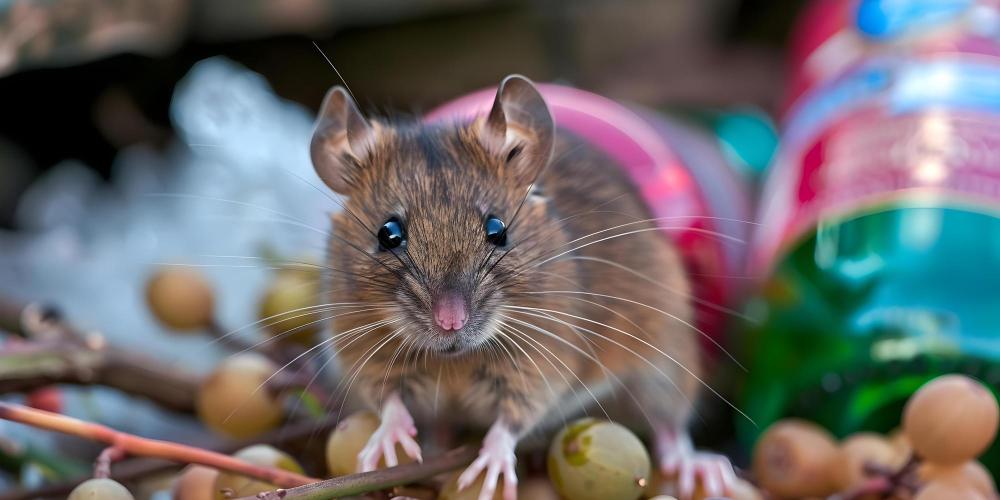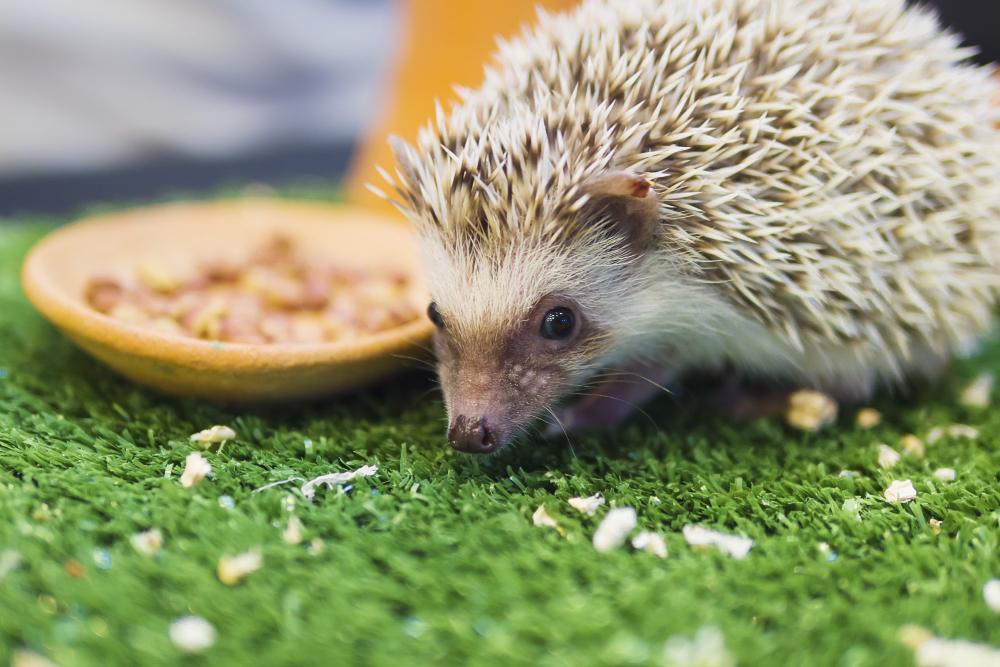Rat Control
Get a free quote today!
Our Services

EMERGENCY PEST CONTROLLER
Rats are mammals belonging to Order Rodentia. Rats are part of the huge mammal family known as rodents (from the Latin rodere, “to gnaw”). This name refers to their gnawing behavior, which is required to control the size of their unique front incisor teeth, which have a chisel-like structure. Rats are usually thought of as omnivorous scavengers who are highly adaptive. They are nocturnal and extremely agile animals. If the population is very large, food is in short supply, there is little disruption, or there is little danger, they may roam and feed during the day. They are extremely attentive to and concerned about any changes in their environment as they move to and from the nest site
Expert Treatment
Safe Solutions
Long-Term Prevention


The physical characteristics of Norway rats include the following
- Blunt Nose
- Brown or Grey Fur
- Grey Feet
- The Tail Length Of 16 20 Cm
- Short Thick Ears With Fine Hair
- Head And Body Length Is Approximately 20 To 27 Cm
- Weight Of 200 500 Grams
- Banana Or Sausage Shaped Droppings
The Physical Characteristics Of Roof Rat Include-
- Pointed Nose
- Grey And Brown Fur
- The Tail Length Of 25 CM
- Pink Feet
- Head And Body Length Is Approximately 14 To 20 Cm
- Slight, Slender, Streamlined Build
- Weight Of 200 300 Grams
- Large, Thin, Almost Hairless, Translucent Ears
- Spindle Shaped Droppings
Major Rodent Pest Species Are
Norway Rat
- The larger pest rats are the Norway rat, commonly called the common rat, sewer rat, or brown rat.
- Their lifespan typically ranges from 9 to 12 months.
- The average litter size for females is 8-10 puppies, and they can have 5-6 litters annually. The gestation period is 21 days, and sexual maturity is reached in the young at 3-4 months.
- Typically, Norway rats are active at night. They can communicate through high-pitched vocalization and are proficient swimmers and diggers.
- The omnivorous Norway rat will consume both plant and animal stuff. They will eat almost anything, although they favour foods high in protein and carbs, such as cereals, which account for a sizable portion of their diet. They also consume meat, fish, veggies, and other items.
Roof Rat
- The black rat is another name for the roof rat. They are smaller than Norway rats.
- Typically, they live between 9 and 12 months.
- Each year, females can have up to four litters, with an average of six to eight puppies. A female’s gestation periods are 21 days, and sexual maturity is reached at 3-4 months.
- Roof rats are frequently seen in populated locations or close to the coast. Due to their strong climbing abilities, they may nest in ships, buildings, and roof spaces.
- Although they eat a variety of things, roof rats frequently eat cereals, grains, fruit, and almost anything else that has nutritional value. They can consume both meat and insects because they are omnivores
Major Rodent Pest Species Are
- Plaque
- Poliomyeliti
- Rat bite fever
- Trichinosis
- Typhus
- Hantavirus
- Leptospirosi
- Pneumonic plague
- Murine typhus fever
Direct Contamination
- Rat's urine or faces contaminating meals or utensils. Examples include- food poisoning from Salmonella, mild meningitis, Weil's illness, a bacterial infection causing jaundice, and tapeworm.
- Direct contamination from urine or faces, where germs appear to infiltrate the skin through tiny scratches, an example of this is Weil's illness.
- Direct human bites contamination, such as rat-bite fever and relapsing fever (bacteria)
Indirect Contamination
- Indirect contamination is caused by ectoparasites that feed on blood, such as fleas, examples include the bubonic plague and murine typhus fever (Rickettsia).
- Indirect contamination from pets to humans, such as favus, a skin condition caused by a rat to pets to humans fungus
- For instance, trichinosis (worm-infested rat eaten by a pig, worm-infested pig eaten by a human) is an indirect infection caused by being consumed by an intermediate carrier
Physical Damage
- Rats physically harm furniture, books, food containers, doors, skirting boards, and upholstery
- Telephone systems have broken down and short-circuited due to wire and cable nibbling, which might lead to equipment damage.
Chemical Control Methods For Rat Control
- TRACKING POWDERS AND GELS - Rodenticides can be found in powder or gel form. When these are positioned in areas where rats are likely to contaminate their paws and fur (such as along runways, in tunnels, or on the bottom of bait stations), the rodents will subsequently eat some poison while grooming. Tracking powders can be scattered in the proper locations or in less accessible circumstances, and a dust blower may be helpful.
- BAITING- Rodenticides are frequently used to manage rat infestations. Acute or chronic rodenticides can kill the rodent with a single dosage (acute). Poison baits can be made from various ingredients, such as bread, cereals, fish, meat, prawns, fruits, nuts, or vegetables.
- Dusting - The use of light dusting give reasonable residual control
Non Chemical Control Methods For Rat Control
- SANITATION- Sanitation limits the amount of food and shelter rodents have access to -the importance of adopting high levels of hygiene and sanitation to prevent rat activity.
- PROOFING-Proofing is the process of making structural changes to a building to prevent rat access. It is best to avoid using materials like wood and plastic because rodents can gnaw through them
- TRAPPING - Trapping is physically capturing rodents with traps, glue boards, simple snap traps, and multiple mouse-catching devices. Trapping techniques demand more time and effort than other chemical rodent control techniques
Signs Of Rodent Activity
- DROPPING - Rodent species can be determined by looking at the droppings. They indicate extremely recent activity when they are shiny, black, and flexible. Typically, they dry out in 2-3 days and become dull and hard. Eventually, they may also be attacked by insects. Consider into account cleaning up droppings from specific areas so that a later inspection will more clearly show whether or not there has been continuous activity.
- GNAWING- To keep their incisors down, rodents must gnaw. They frequently munch on items such as conduits, cables, soft metals, soap, food containers, and timber. If there are recent gnawings visible next to and below the chew marks, this suggests recent activity
- URINE STAINS - When exposed to a black (ultraviolet) light, rodent urine causes surfaces to glow. Rat urine frequently has the appearance of being sprinkled on the ground. Use caution when using a black light because some substances besides rodent urine may show fluorescent properties
- SOUNDS- Building occupants can draw attention to sounds observed at night or in the evening. The common phrases used for these include bumping, squeaking, chewing, clawing, and sometimes fighting.
- ODOUR- An ongoing rodent infestation typically leaves behind a distinct smell
- NESTS - Nests may be located in hidden areas of buildings. They are typically made of rags, paper, cardboard, straw, and other materials, and if there are recent droppings, they are probably active. Food collections, even snail shells, may indicate that rat breeding grounds are nearby
- RUNWAYS AND RUBMARKS-Surfaces have developed these greasy smear marks from long-term contact with soiled, smooth rat fur. Usually, they are most noticeable on vertical surfaces, and they are particularly helpful for placing bait stations and traps, whether they are baited or not, as well as for rodent-proofing methods. They suggest no current rodent activity if they are covered with dust or cobwebs.
